I have posted about okra a few times on Instagram and Facebook, and it always provokes a lot of questions, usually from people asking for the recipe.
So my dear readers, today I have your recipe for the best Indian okra sauté ever. If our experience is any proof of the matter, this okra recipe is set to delight you, your family, and your guests.
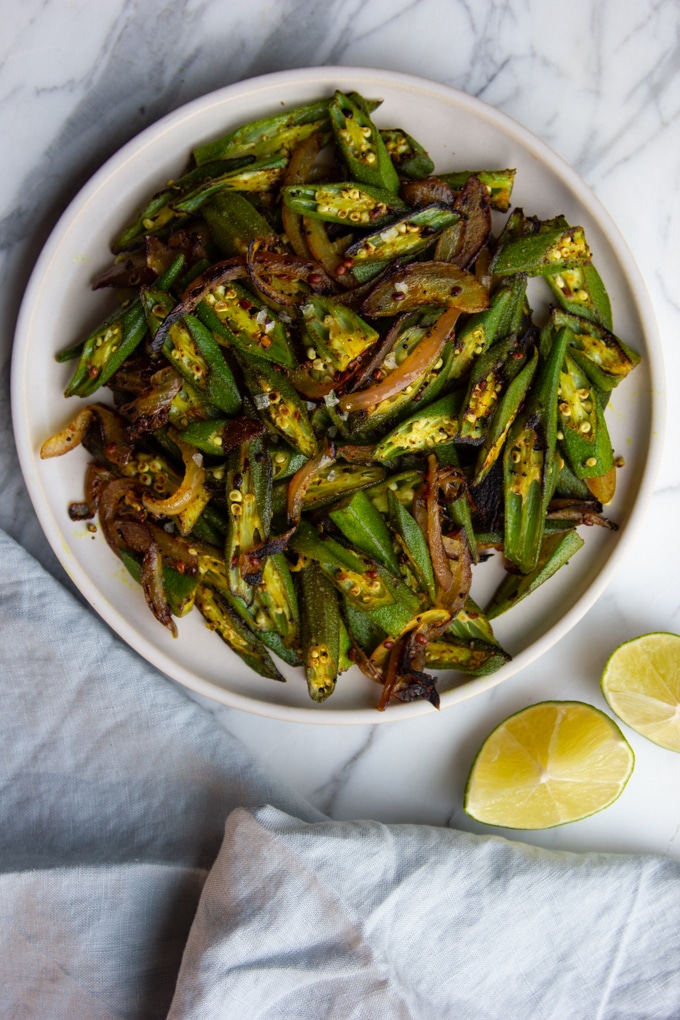
Okra provokes conversation because it isn’t a vegetable that most people have cooked with.
If they have tasted it, it was very likely in some form of soup where okra’s sticky and mucilaginous properties were off-putting.
It is not that sticky okra has a strong taste. It is the texture that most people can’t get past.
Okra is very popular in the American South. Who hasn’t heard of gumbo stew, where okra plays a fitting role as a thickener?
Basically, before I travelled to India, I was in the same boat as everyone else, thinking I would ... ahem ... pass on okra.
Indian Okra? Who Knew?
You can imagine my surprise when I visited my in-laws’ home in India and was served the most delicious okra, and it wasn’t sticky at all! It was so delicious.
In India, okra is called bhindi or lady’s finger. Do you think the okra’s thin green form with a point on the end resembles a lady’s finger? I don't think so. Haha.
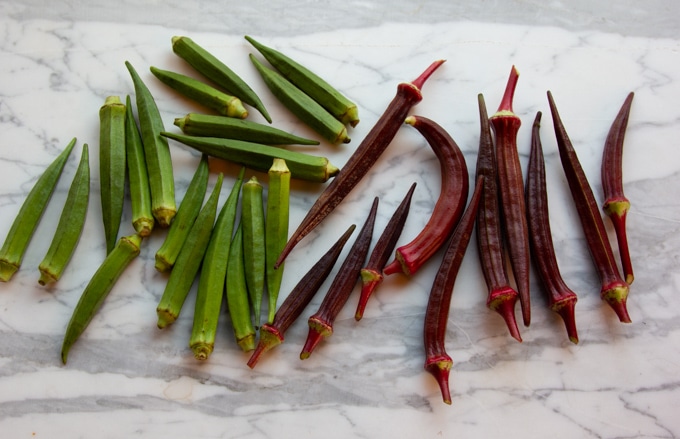
Nonetheless, Indians love their lady’s fingers, and they know how to cook tasty okra.
Today’s recipe is my favorite variation. I have perfected the technique over years of experimentation.
The trick for this Indian okra is to sauté it dry, and salt it only at the very end.
The result is a beautiful okra side dish with no stickiness whatsoever.
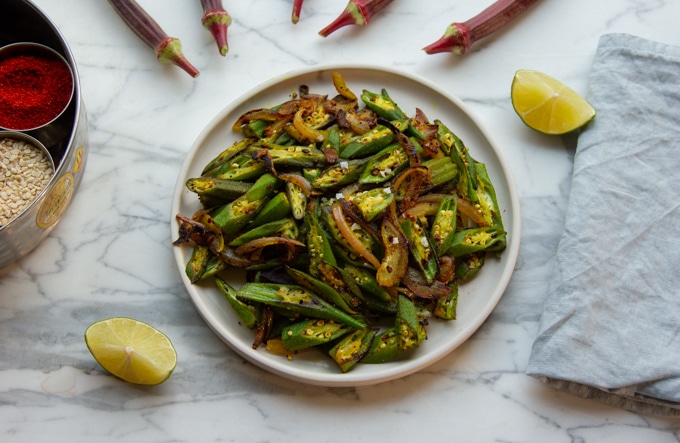
You will enjoy a deliciously complex taste that is entirely unique to okra, but that some people describe as a cross between eggplant and asparagus.
The texture of dry cooked okra is quite excellent as well. The skins retain a good bite, and the seeds within the pods offer an ever so slight crunch that's somewhat akin to pine nuts.
What Are The Health Benefits Of Okra?
I have just told you about the pleasing texture and flavor of sautéed Indian okra. This vegetable is also loaded with nutrition and health benefits.
The health benefits alone suggests that it is worth learning how to cook with okra.
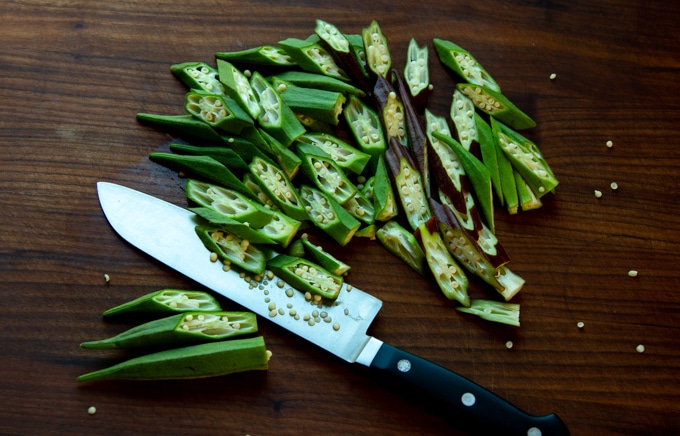
If you don't want to read the health benefits, skip to the next section, where I cover how to select okra at the grocery store, and how to prepare and store it.
Okra is an excellent source of fiber, calcium, iron, magnesium, manganese, and Vitamin C.
It also contains 44 percent of your recommended daily allowance (RDA) of Vitamin K, and 22 percent RDA of folate.
You’ll also get Vitamin A, flavanoid antioxidants, including beta-carotenes, xanthan, lutein, Vitamin B6, calcium, niacin, phosphorus, and copper.
A cup of raw okra contains just 33 calories.
The mucilaginous properties of the okra are helpful to facilitate digestion and alleviate constipation, as well as maintain healthy skin and mucous membranes.
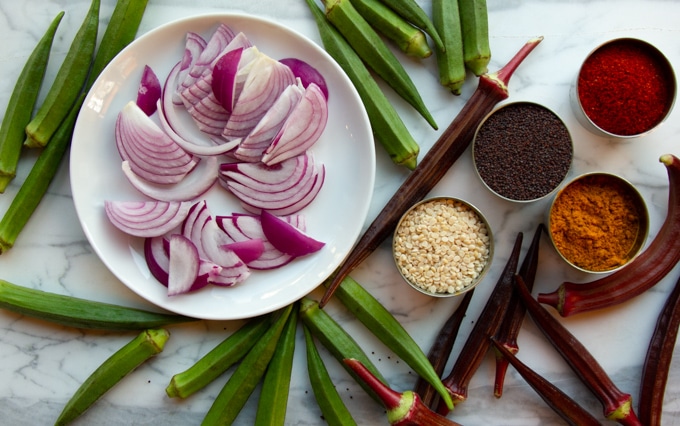
How Do I Buy Fresh Okra?
When I was in India, okra was plentiful and gorgeous. It was dark green in color, blemish-free, and most importantly: soft.
The key tip when buying okra is to buy soft, flexible fingers.
Indian okra is of a different variety than typical American okra.
The Indian okra is slender and elegant looking, while the American okra is thicker, and a lighter green.
This doesn’t mean that American okra won’t taste good. As long as your okra is soft, it will be good. You want to discard any piece of okra that feels woody when you slice into it.
In previous years I grew American okra in my garden, but since I knew its value, I was always on the hunt for seeds of the Indian variety.
This year I discovered the red okra you see in some of the photos. It looked beautiful and slender like Indian okra, so I gave it a try.
The red okra has to be very rare, since I’ve never seen it for sale anywhere.
The funny thing is that red okra turns green when subjected to heat, so it looks like Indian okra in the end anyways.
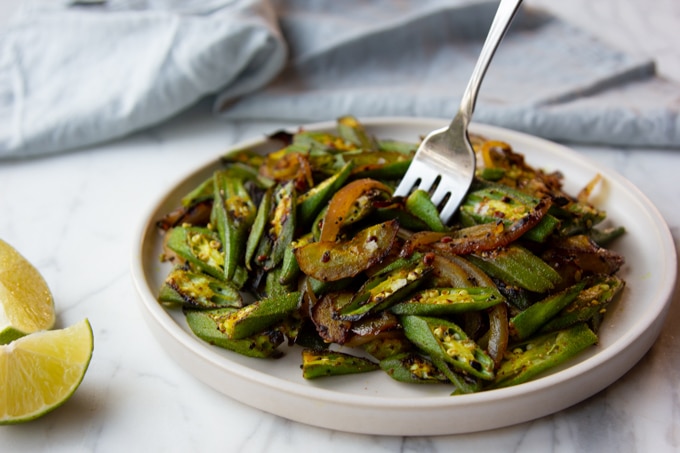
You will likely need to purchase okra at a farmers’ market or Asian grocery store. I can always get it at our local Indian grocery store. You may have one near you?
If you see nice looking okra, do not hesitate to buy some, since now you have this great recipe.
Be prepared to cook it quickly though, because okra does not keep for long in the fridge, and it blemishes easily.
To preserve it as long as possible (a few days max), keep it dry, and store it carefully in a paper or mesh bag in your vegetable crisper.
How Do I Cook Indian Okra With No Slime? (3 Tricks)
It actually took me years to really learn how to cook Indian okra with no slime, and no fuss.
There are three tricks.
The first trick is to wash the okra just before you are ready to cook it. You must then dry it well using a clean tea towel before slicing it up.
A quick way to do this is to jostle the okra inside a clean towel and then pat dry whatever is left.
The second trick is to avoid adding salt until the okra is fully cooked and you are ready to turn off the heat. This may take some discipline for experienced cooks who are used to adding salt at every stage when cooking. Don't do it! The salt draws out the slime.
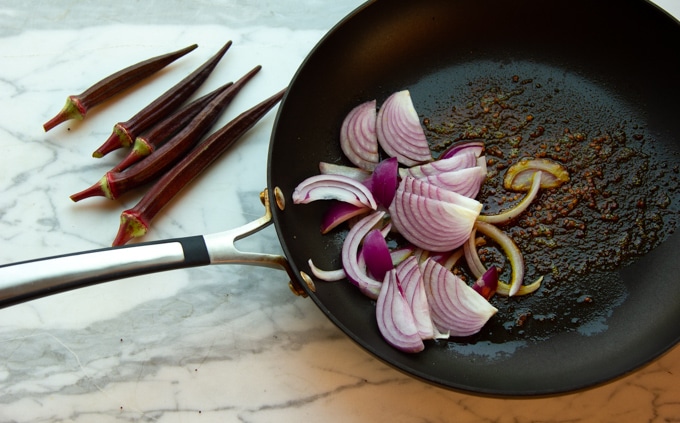
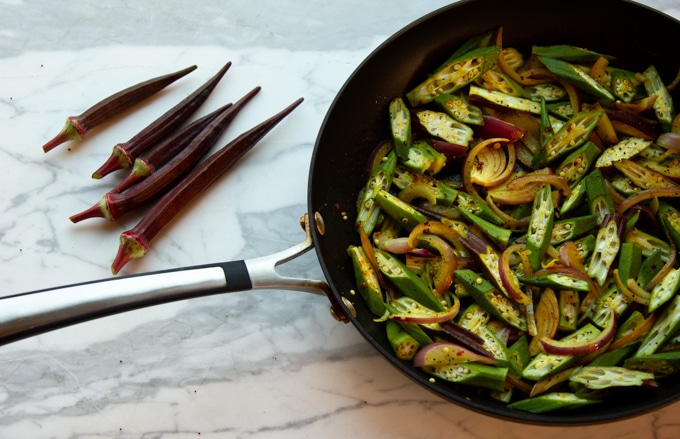
The third trick is to avoid adding any water or liquid to the okra until the very end. This includes not covering the skillet to speed cooking.
You want to keep your skillet on medium heat and allow the okra to slowly caramelize before disturbing it. Then you caramelize another layer of the okra. This way you get beautiful caramelization and even cooking.
Your final Indian okra sauté will still be fully cooked, but it will have just a touch of bite to it.
Well, I think you are ready to cook some okra. I hope this recipe works out for you, and you enjoy it as much as we do.
RECOMMENDED FOR YOU:
How to Cook Any Vegetable South Indian Style —GET RECIPE
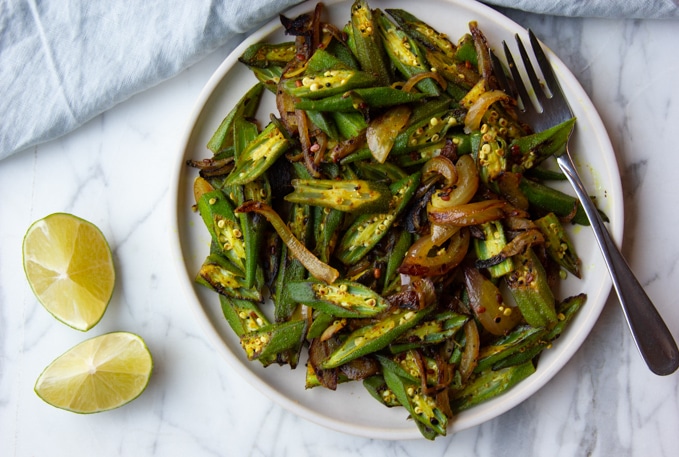
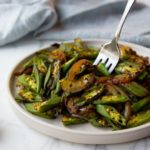
Indian Okra and Red Onion Sauté
Ingredients
- 30 okra
- 1 medium red onion, sliced
- 1 ½ tablespoons vegetable oil
- ¼ teaspoon black mustard seeds, (see notes)
- ½ teaspoons split urad dal,
(optional; see notes)
- ½ teaspoon turmeric powder
- ¼ teaspoon red chili powder (substitute with cayenne pepper),
(or cayenne pepper)
- ½ teaspoon Himalayan pink salt, or to taste
Instructions
- Wash the okra with water and dry it really well using a clean kitchen towel. Cut off the tops and discard them. Slice okra thinly on a diagonal, about ¼-inch thick.
- Slice your onion to the same thickness. Take out your spices and have them ready by the stove.
- Use a skillet large enough to hold all your vegetables in a single layer, and heat vegetable oil on medium heat. Add the black mustard seeds and urad dal and sauté until the seeds start to sputter and pop, and the dal gets brown.
- Add the turmeric and red chili powder to the oil and stir for about 20 seconds, then add the onion and prepared okra. (Careful, because the spices burn easily. Adding the vegetables stops this from happening because it introduces moisture.) Stir well to incorporate the spices with the vegetables, and then use a wooden spoon to press the okra and onion onto the bottom of the skillet in an even layer. Allow the okra to brown for a few minutes before disturbing. Repeat about 4 times to add layers of caramelization. Do not add salt. You will add it after the okra is cooked. If the okra is not browning, turn up the heat a bit. When the okra is fully cooked, it will be nicely caramelized with just a touch of crunch.
- Just before you turn off the heat, add a good pinch of salt, and mix it into the okra. This dish is also wonderful with a squeeze of fresh lime.
To Serve
- This Indian okra has a mild taste, and it will combine well with most Western food.For a tasty Indian dinner, enjoy okra and red onion sauté with basmati rice and any Indian lentil or bean dal. Add an Indian flatbread like roti or naan to complete the meal. (Links go to other Buttered Veg recipes)We also greatly enjoyed leftovers of Indian okra sauté mixed with basmati rice, like a pilaf. I could imagine this as a fancy side dish to complement your favorite dinner main.
Notes
Nutrition
If you liked this post, please share it with your friends on social media, or leave a comment below.
For more Buttered Veg lifestyle content, follow me on Pinterest, Facebook, Instagram, and Twitter.
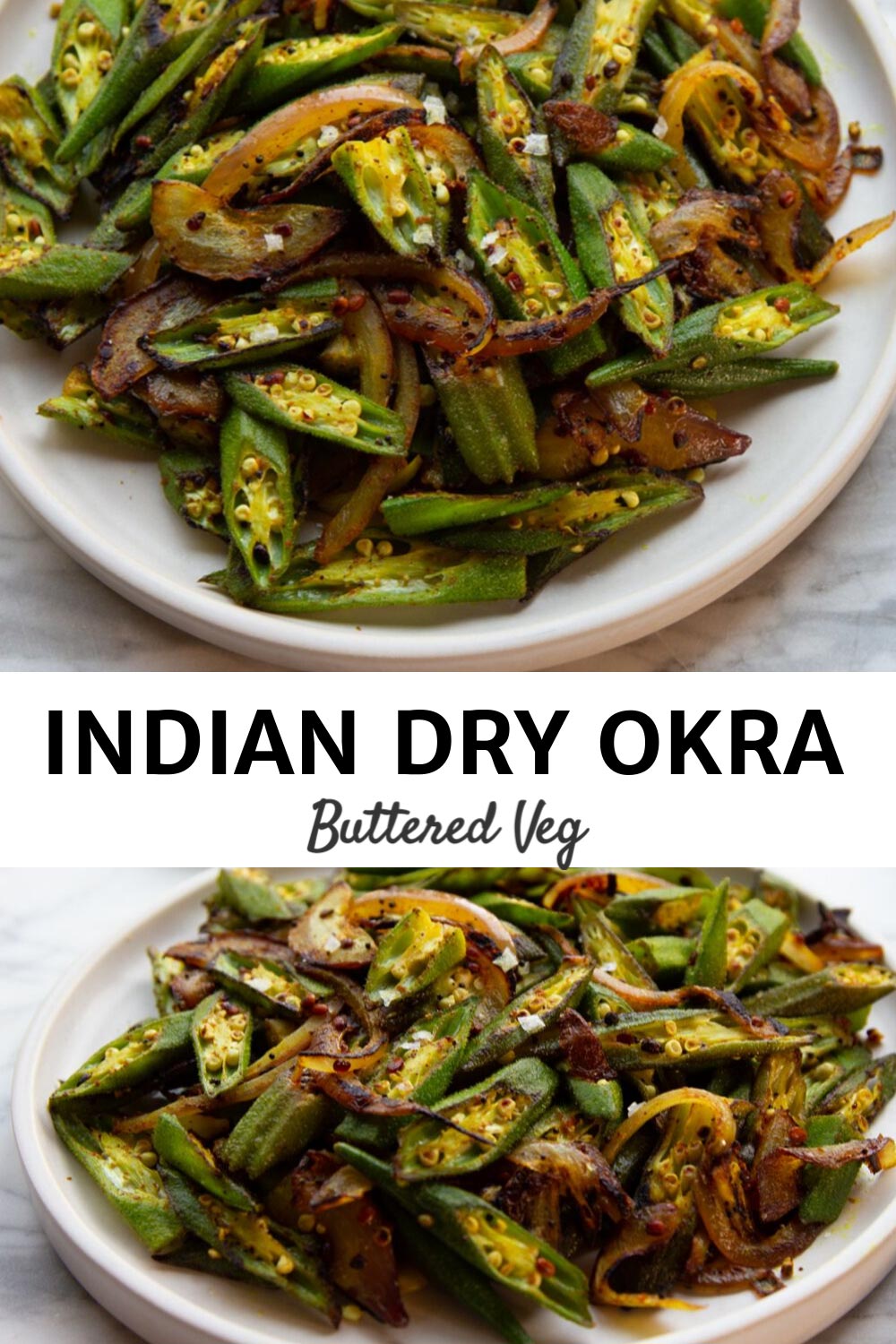

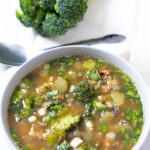

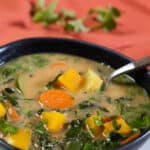
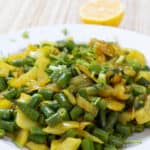




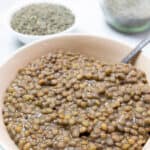
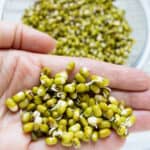
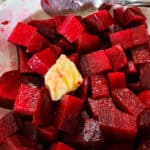

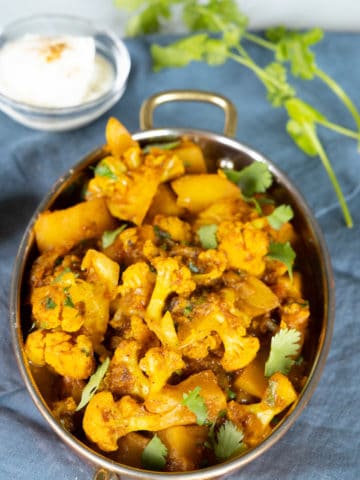
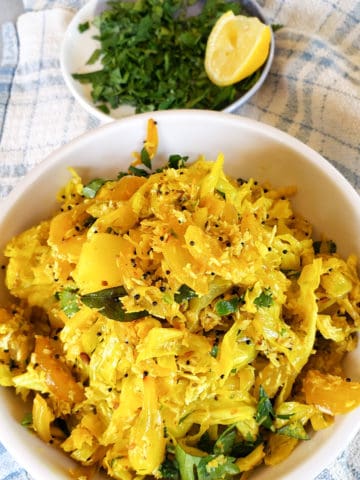
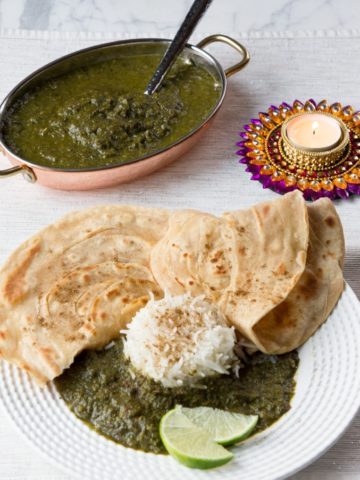
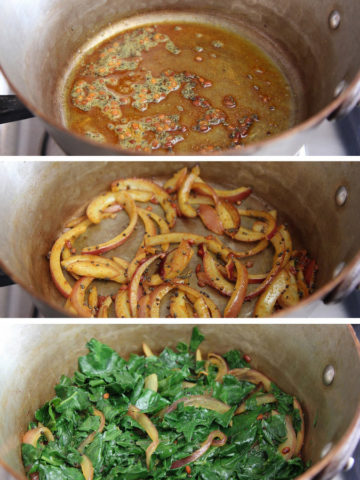
Leave a Reply